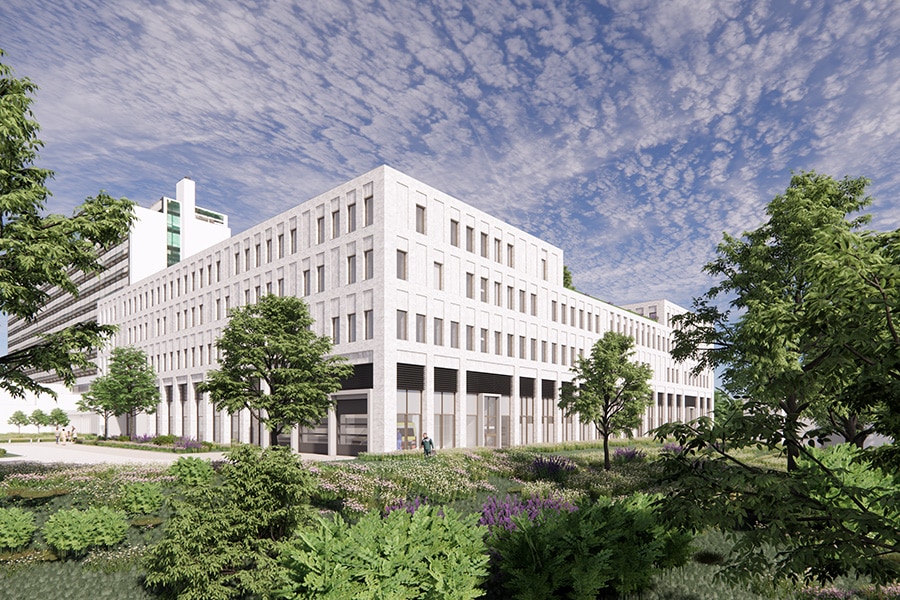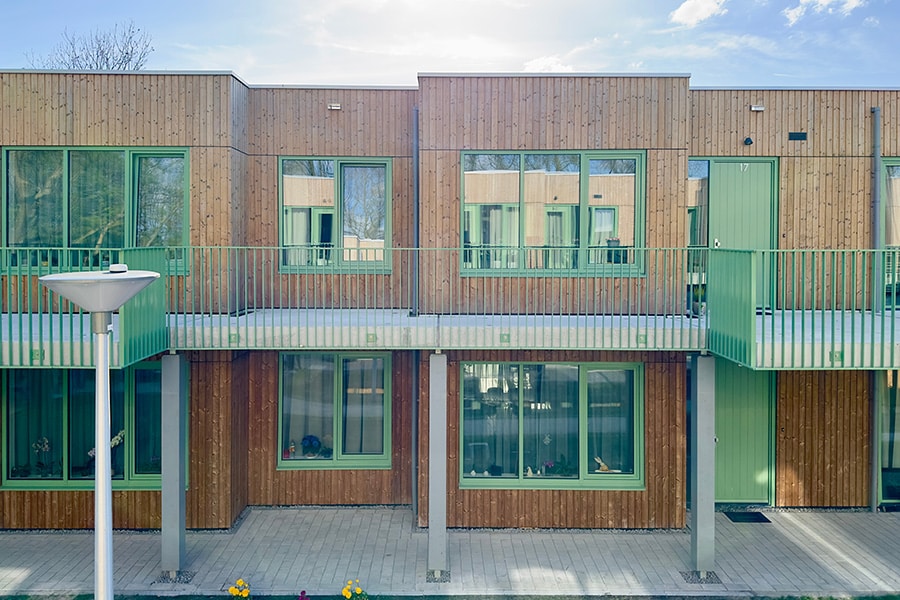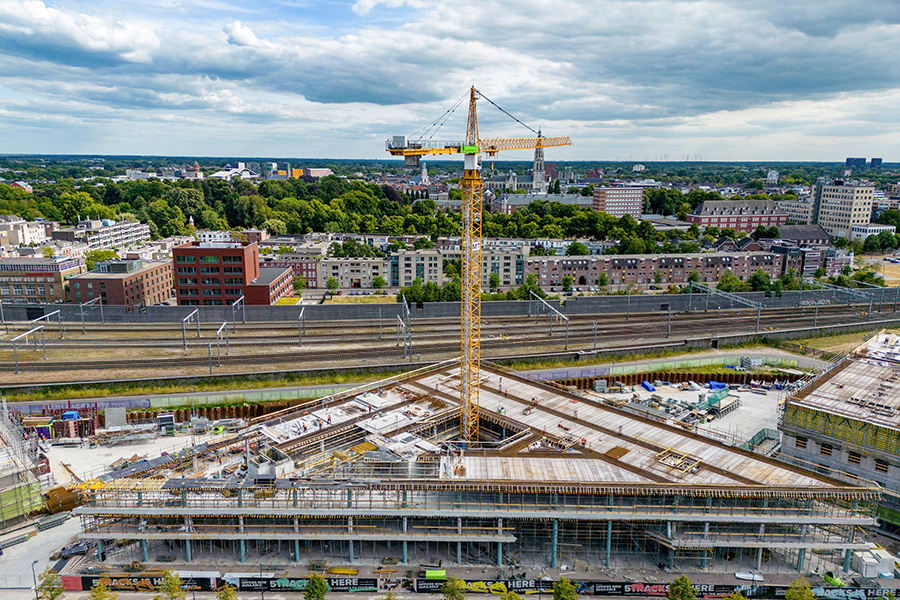
SAWA: a revolutionary wooden residential building on the Lloyd Pier
On the Lloydpier in Rotterdam, a special project is about to begin. With SAWA, developers Nice Developers and ERA Contour want to prove that circular construction with wood is also possible in high-rise buildings. In addition, SAWA should stimulate biodiversity in the city. "The residential building has green and flowering planting throughout the year," says Arjan Nolles, project developer at ERA Contour. "And there is no shortage of fauna either, thanks to various nesting boxes, sparrow towers and other habitats for birds, butterflies and bees."
Building with wood is many times more sustainable than building with concrete, Nolles emphasizes. "Whereas the production of concrete releases a lot of CO2, wood actually absorbs CO2. At a time when CO2 and nitrogen emissions are under a magnifying glass, a wood revolution seems almost inevitable. Nice Developers and TBI company ERA Contour are happy to take a pioneering role in this. Following in the footsteps of several low-rise wooden houses, which have also been realized in Rotterdam, SAWA will be our first wooden high-rise project. The 50 meter high residential tower is in the final stage of its development. Right now the final permits are being arranged. We are also busy with the final preparations and pieces for construction." Even before the construction period, the realization team led by ERA Contour will start implementation, he says. "In the third quarter of 2024, we hope to deliver the new building."

Wood where possible
SAWA is in many ways a revolutionary development. "Everywhere it is technically possible, wood is used," Nolles emphasizes. "For example, the main load-bearing structure consists largely of CLT (Cross Laminated Timber). The trees used for this project come from sustainable European production forests. For every tree felled, three are planted back." To ensure that the building remains balanced, a concrete core was still added. And the first floor is also made of concrete, which is more resistant to the damp environment in the ground. "The walls, floors, beams and columns above will be constructed entirely in wood and supported with steel where necessary."
Detachable and reusable
SAWA is built using a modular wooden building system, using only dry, separable solutions. "The wooden column and beam structure will remain visible even after completion," says Nolles, "allowing for maximum experience of the material. In addition, the residential building will have a wooden façade finish. This not only provides a unique and natural look on the outside, but also reinforces our vision of a wooden building." Less visible but equally important from a circularity perspective is that no concrete will be poured on the CLT floors, he says. "In order to still add sufficient ballast and reduce noise and vibrations, we opted for a nice (dry) gravel layer. This also keeps the floor structure completely detachable and reusable."
A stepped structure was chosen for the building form, reminiscent of the rice fields (sawas) built against a slope. "On the terraces of our residential tower will be large planters with different plants and shrubs. A team of specialists has figured out for us which plants and shrubs thrive best at which height, ensuring sustainability in this area as well." Additional greenery will be installed on the low-rise roofs. Various seeds from Rotterdam's nature will also be sown here, for even more biodiversity.

Inspire and enthuse
"Wood may require a different way of designing, but it absolutely holds its own as a building and construction material," Nolles believes. "In the future, we definitely want to use the material more often. SAWA is a great first step for this. With this impressive residential building we also want to inspire and enthuse other stakeholders in the market. As the start of construction approaches, we see their interest growing."
That SAWA will be a special building is also proven by the many awards that have since been presented to the residential building. Following the ARC20 Innovation Award, SAWA won the international Green Good Design Award in April 2021. Last December, the building won first prize in the 'Future Projects - Experimental' category of the World Architecture Festival (WAF).

Co-maker provides durable eye-catchers
At SAWA, Van den Pol Elektrotechniek is responsible for the E-installation in the apartments and common areas. "There, we also provide sensor-controlled lighting," says business unit leader Residential Construction Bob Oostendorp. "That burns on 20% and switches on fully only when there is movement."
The parking garage will have charging facilities. "We will also take care of the fire alarm system. The roof will accommodate 162 PV panels and three windwheels. This compact wind turbine is a real sustainable eye-catcher. The same goes for the facade planting; we are laying the control cables for the irrigation system."
Wireless switching
A 19-story wooden building listens very closely structurally. "That is why it is necessary to determine the recesses early in the process. These are important in the structural calculations. Furthermore, there are specific fire safety requirements. The fewer pipes, the better. That's why we choose wireless switches and doorbells."
A wooden complex of this height is unique. "Van den Pol is a regular co-maker with ERA Contour. We know what we have in common and that is a crucial advantage in an innovative project like this. To rule out surprises, we make a mock-up together. That gives advance insight into the building and installations down to the detail level."



